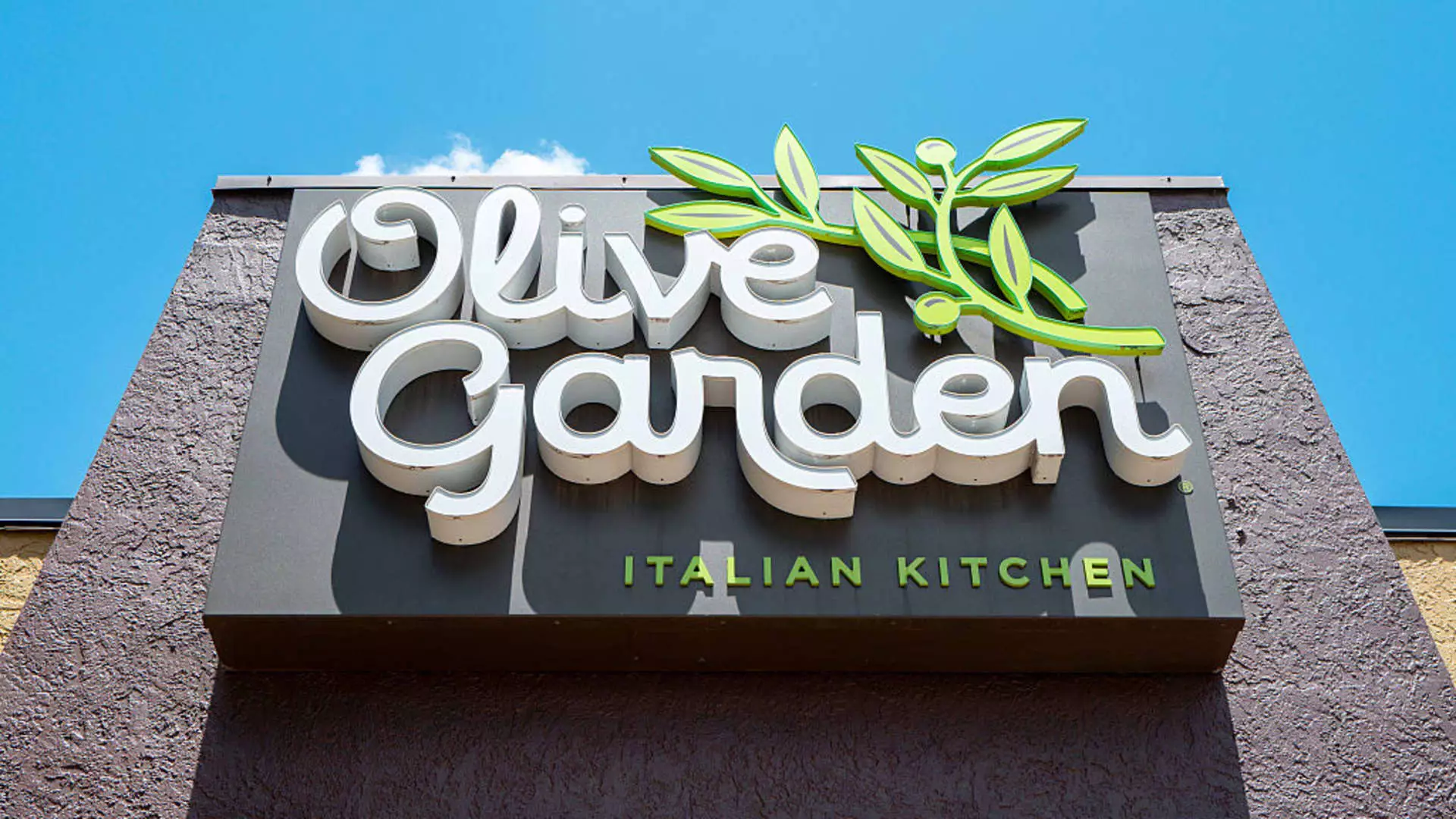Darden Restaurants’ recent quarterly results unveil a troubling narrative: a company that might be riding a temporary wave of convenience and value, yet risks concealing foundational weaknesses. While the firm boasts a commendable revenue increase, its shares plunged over 9%, signaling investor skepticism. This dissonance suggests that the ostensibly solid growth masks deeper vulnerabilities within the casual dining landscape, which is progressively losing ground to faster, more flexible fast-casual options. As a center-right observer committed to fiscal prudence and competitive markets, I see Darden’s performance as symptomatic of an industry that overestimates its resilience amid mounting pressures.
The core concern lies in Darden’s dependency on specific brands—Olive Garden and LongHorn Steakhouse—that have managed to stave off decline through strategic marketing and value positioning. However, these are merely band-aids on a sector struggling to reinvent itself against a tide of inflation, shifting consumer preferences, and economic uncertainty. The fact that investors respond negatively to the latest results—even when the company raised its revenue forecast—indicates a broader investor wariness towards overvalued chains that may not sustain this artificial buoyancy over the long term.
Reputations at Risk Amidst Revenue Optimization Strategies
Darden’s performance offers an intriguing insight into how casual dining brands are attempting to adapt through promotional tactics and modest menu price increases. While the company claims to have kept price hikes below inflation—merely 0.3% in the recent quarter—the real question remains: at what cost? Maintaining slim profit margins while trying to attract value-conscious customers could be a recipe for precarious sustainability. The reliance on promotional campaigns like Olive Garden’s “Never-Ending Pasta Bowl” and delivery partnerships signifies desperation more than innovation, illustrating that the essence of genuine growth—product differentiation and quality—remains elusive.
Furthermore, Darden’s statement that higher-income groups are increasingly dining at casual establishments complicates the narrative. It suggests that the company is not merely serving a budget-conscious demographic but is increasingly appealing to wealthier consumers seeking affordable luxury. This shift carrying risks of diluting brand values and commodifying dining experiences that once distinguished Darden’s core reputation. The paradox here is that in attempting to broaden its appeal, Darden might be risking overextension, padding earnings superficially rather than addressing fundamental consumer needs or expectations.
The Fragility Revealed in Fine Dining’s Decline
One of the more alarming signals in Darden’s recent report is the near-stagnation—actually a slight decline—within its fine-dining segment. A 0.2% decrease in same-store sales, despite optimistic projections, underscores the fragility of upscale dining under pressure from economic constraints and changing lifestyle patterns. This segment’s downturn could foreshadow a more pronounced erosion, especially considering that prior quarters have shown consistent struggles in this category.
Darden’s acknowledgment that drops in business travel are impacting weekday sales points to a broader economic malaise affecting discretionary spending. With corporate travel and events still recovering sluggishly, fine dining hangs precariously, primarily sustained by a few niche markets. The broader picture reveals an industry heavily reliant on occasional demand rather than sustainable customer loyalty. For center-right thinkers aligned with free enterprise, this is a cautionary tale: markets cannot rely indefinitely on adjusting prices or promotional gimmicks; innovation and quality must be at the forefront for true resilience.
Outlook or Illusion? The Future of Casual Dining
While Darden’s optimistic guidance—projecting 7.5% to 8.5% revenue growth—may sound promising at face value, skepticism is warranted. The company’s reliance on acquisition-driven growth, like the recent purchase of Chuy’s Tex-Mex, masks an underlying stagnation in organic expansion. Moreover, reiterated profit forecasts amid declining segment performances appear optimistic, bordering on wishful thinking rather than strategic foresight.
This raises questions about whether casual dining chains are genuinely evolving or merely weathering the storm with temporary measures. It’s not a stretch to suggest that unless these companies fundamentally rethink their models—focusing on quality, innovation, and cost-effective differentiation—they risk becoming relics of an era that valued convenience over authenticity. Darden’s current trajectory embodies a market overestimating its adaptability and underestimating the churn of consumer tastes.
Ultimately, Darden’s mixed results should serve as a wake-up call. The industry’s veneer of resilience obscures a fragile foundation that requires genuine innovation, not just marketing maneuvers or temporary price control. Without a serious reassessment, even leading players like Olive Garden and LongHorn risk becoming casualties of their own complacency—victims of a marketplace that increasingly values agility and authenticity over outdated notions of casual dining dominance.

